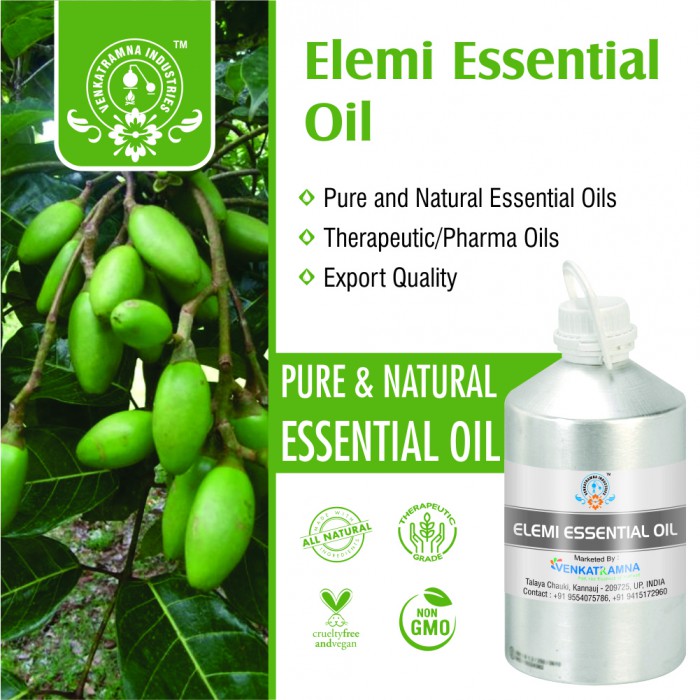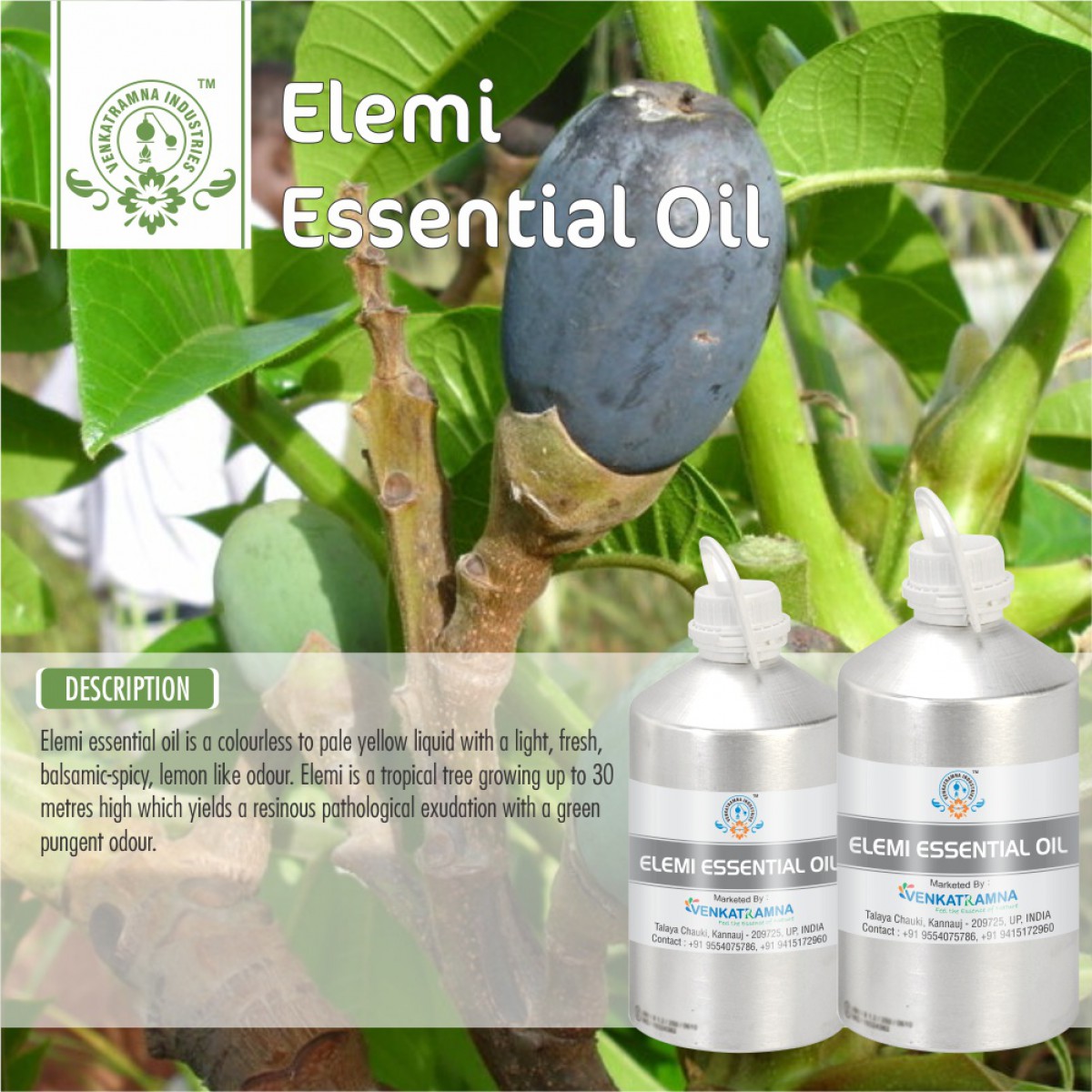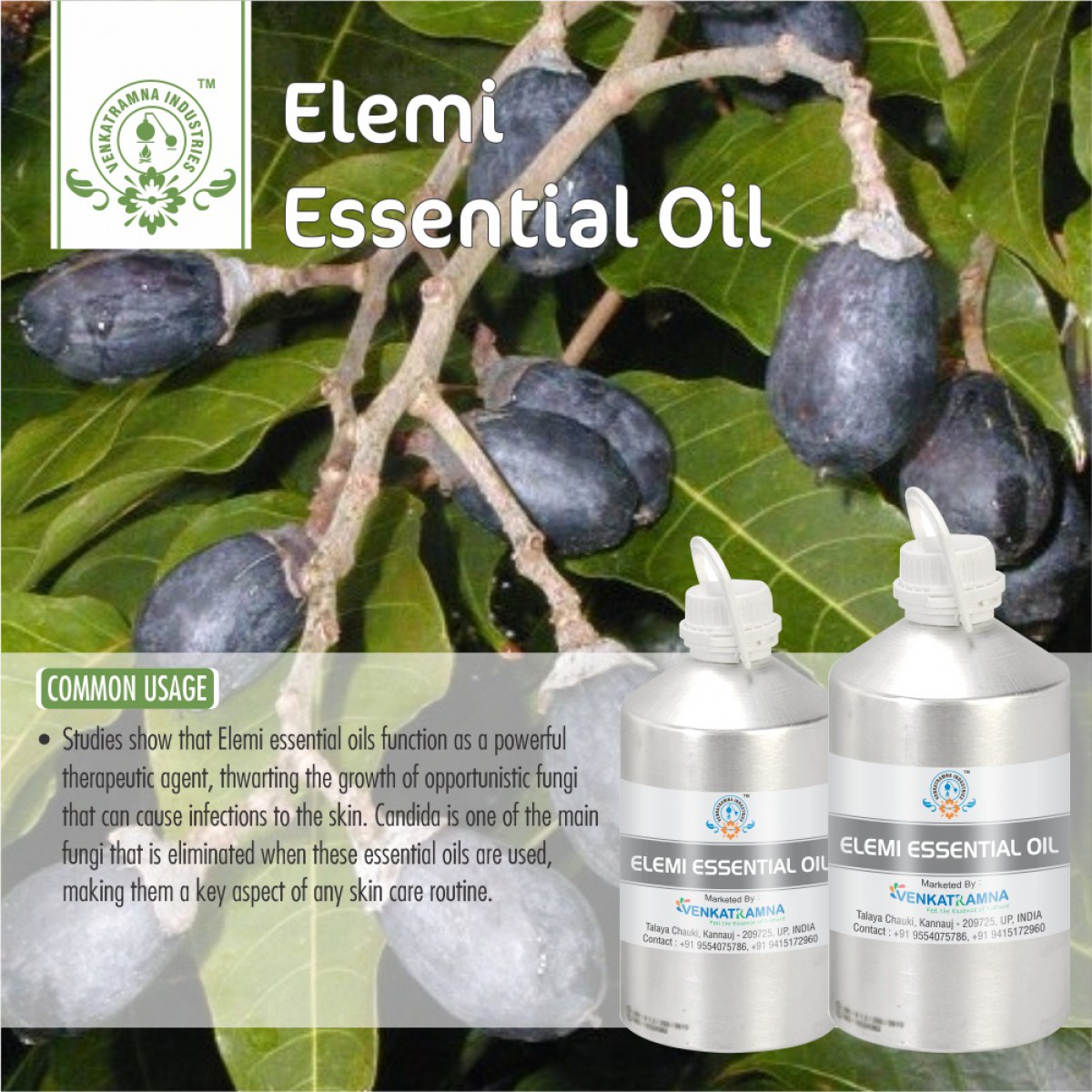Botanical Name: Canarium luzonicum Common name: Elemi, Manila Plant f Read More
|
Botanical Name: |
Canarium luzonicum |
|
Common name: |
Elemi, Manila |
|
Plant family: |
Burseraceae |
|
Genus: |
Canarium |
|
Appearance/Color: |
A thin, clear, colorless to pale yellow liquid. |
|
Odor: |
Slightly balsamic, herbaceous and spicy tonne aroma. It also
throws a bright and citrus fragrance reminding soft floral scent. |
|
Blends With: |
Frankincense, Clary Sage, Myrrh, Rosemary and Lavender
oils |
|
Origin: |
Philippines |
|
Source: |
Resin |
|
Method of
Extraction: |
Solvent Extraction |
The genus Canarium L. probably originated from the North American conti-nent, not Gondwanaland [1]. This clade embraces 75 species of trees which aremainly found in tropical Asia and the Pacific, and a few species in tropicalAfrica [2]. About 9 species were found in the Philippines [2]. The geographi-cal centre of their genetic diversity is the Molucca Islands of eastern Indone-sia, but their centre of cultivated diversity is undoubtedly western Melanesia.Twenty to 25 species are found in the South Pacific, of which 21 are in PapuaNew Guinea [4], eight in the Solomon Islands [5] and 3 or 4 in Vanuatu [6].The members of the genus Canarium L. consist of medium to large buttressedtrees up to 40-50m tall, or rarely a shrub. The barks are greenish grey, fawn orlight yellow brown that are usually smooth, scaly or dippled with many smalllenticels. Outer bark are thin while the inner barks are pinkish brown orreddish brown, laminated, soft and aromatic with a clear sticky or rarely oilyexudate. The stems are usually terete. The leaves are pinnate, spiral and stipulated. The rachis is terete flattened tochanneled swollen at base, and bears 5-21 folioles. The folioles are oblique atbase, entire, dentate or serrate at margin, often thick and acuminiate at apex.The secondary nerves are arching and joined near margin. The tertiary nervesare reticulate. The infloresence is an axillary or terminal panicle.
DISCLAIMER
The complete range of conditions
or methods of use are beyond our control therefore we do not assume any
responsibility and expressly disclaim any liability for any use of this
product. Information contained herein is believed to be true and accurate however,
all statements or suggestions are made without warranty, expressed or implied,
regarding accuracy of the information, the hazards connected with the use of
the material or the results to be obtained from the use thereof. Compliance
with all applicable federal, state, and local laws and local regulations
remains the responsibility of the user.
The FDA has not evaluated the
statements on this website. No claims are made by Venkatramna Industries as to
the medicinal value of any products from vriaroma.com or by us. The information
presented here is for educating our customers about the traditional uses of
essential oils and is not intended to diagnose, treat, cure, or prevent any
disease. You are responsible for understanding the safe application of these products.
If you have any questions, please call or email us for further information.
As per NAHA guidelines, New Directions Aromatics
(NDA) does not recommend the ingestion of essential oils. It is imperative to
consult a medical practitioner before using Essential Oils for therapeutic
purposes. Pregnant and nursing women and those taking prescription drugs are
especially advised not to use this product without the medical advice of a
physician. The oil should always be stored in an area that is inaccessible to
children, especially those under the age of 7.
Elemi has been used in the form of an ointment as a stomach
stimulant and as an expec-torant [8]. The barks of Canarium indicum L. has been
used for chest painswhere else the oil has been patented for treatment of
arthritis pain and theoleoresin of the tree is applied as a poultice for
ulcerated wounds. The resin ofCanarium tonkinense Engl. has been used as a
stimulant, rubefacient and anti-rheumatic when applied externally. The
oleoresin has been applied as oint-ment for ulcers.
Manila elemi (the oleoresin
obtained from the tree), and the essential oil distilled from the resin, have a
long history of medicinal use. They are considered to be antibacterial,
antifungal, antirheumatic, antiseptic, antispasmodic and rubefacient. A study
on the composition of Manila elemi oil from the distillation of elemi resin
yielded 39 compounds, with limonene, the most abundant at 56%. A corn-sized
drop of the resin is taken with water in the treatment of fevers and chills.
The oleoresin is applied externally to arthritic and rheumatic joints, boils,
abscesses, furuncles, burns and sores. It is heated and applied to the chest as
a poultice to stop severe coughing. The tree bark is commonly used for
postpartum baths. The essential oil is an ingredient of a commercial
preparation called 'Lysout', a natural anti-lice foaming gel that also contains
Echinacea purpurea.
COMMON USAGE
·
Reduces infections
·
Works as stimulant
·
Possesses analgesic properties
·
Eases breathing
·
Acts as tonic for the body
·
Antibacterial and Antifungal
·
Antioxidant
·
Anti-inflammatory
·
Hepatoprotective
·
Analgesic
Ingredients:
|
S.No |
Key Constituents |
Strength (%) |
|
1 |
a-phellandrene |
4.3-15.1 |
|
2 |
(P)-limonene |
26.9-65.0 |
|
3 |
elemol |
2.8-17.3 |
|
4 |
Elemicin |
1.8-10.6 |
|
5 |
p-cymene |
1.4-7.7 |
|
6 |
Sabinene |
1.3-5.9 |
|
7 |
b-pinene |
0.3-1.0 |
|
8 |
Methyleugenol |
0.2-0.3 |
|
9 |
a-pinene |
0.4-5.4 |
|
10 |
1,8-cineole |
<2.5 |
|
11 |
b-myrcene |
0.6-2.4 |
|
12 |
b-phellandrene |
0.8-1.6 |
Safety Summary
·
Hazards: Not Known.
·
Acute Toxicity Not classified.
·
Skin corrosion / irritation: Causes skin
irritation.
·
Serious eye damage / irritation: Not
classified.
·
Respiratory or skin sensitization: Skin -
May be fatal if swallowed and enters airways.
·
Germ Cell Mutagenicity: Not classified.
·
Carcinogenicity: Not classified.
·
Reproductive toxicity: Not classified.
·
STOT-single exposure: Not classified.
·
STOT-repeated exposure: Not classified.
·
Aspiration hazard: May be fatal if
swallowed and enters airways.
·
Photo-toxicity: No additional data
available.
·
Toxic: Very toxic to aquatic life with long
lasting effects.
·
Persistence & degradability
Biodegradability: no degradability data is available; the substance is
considered as not degrading quickly.
·
Bioaccumulation Potential: No additional data
available.
·
Mobility in soil: No additional data available.
·
Results of PBT and vPvB Assessment: No
additional data available.





 MSDS-Elemi.pdf
MSDS-Elemi.pdf




